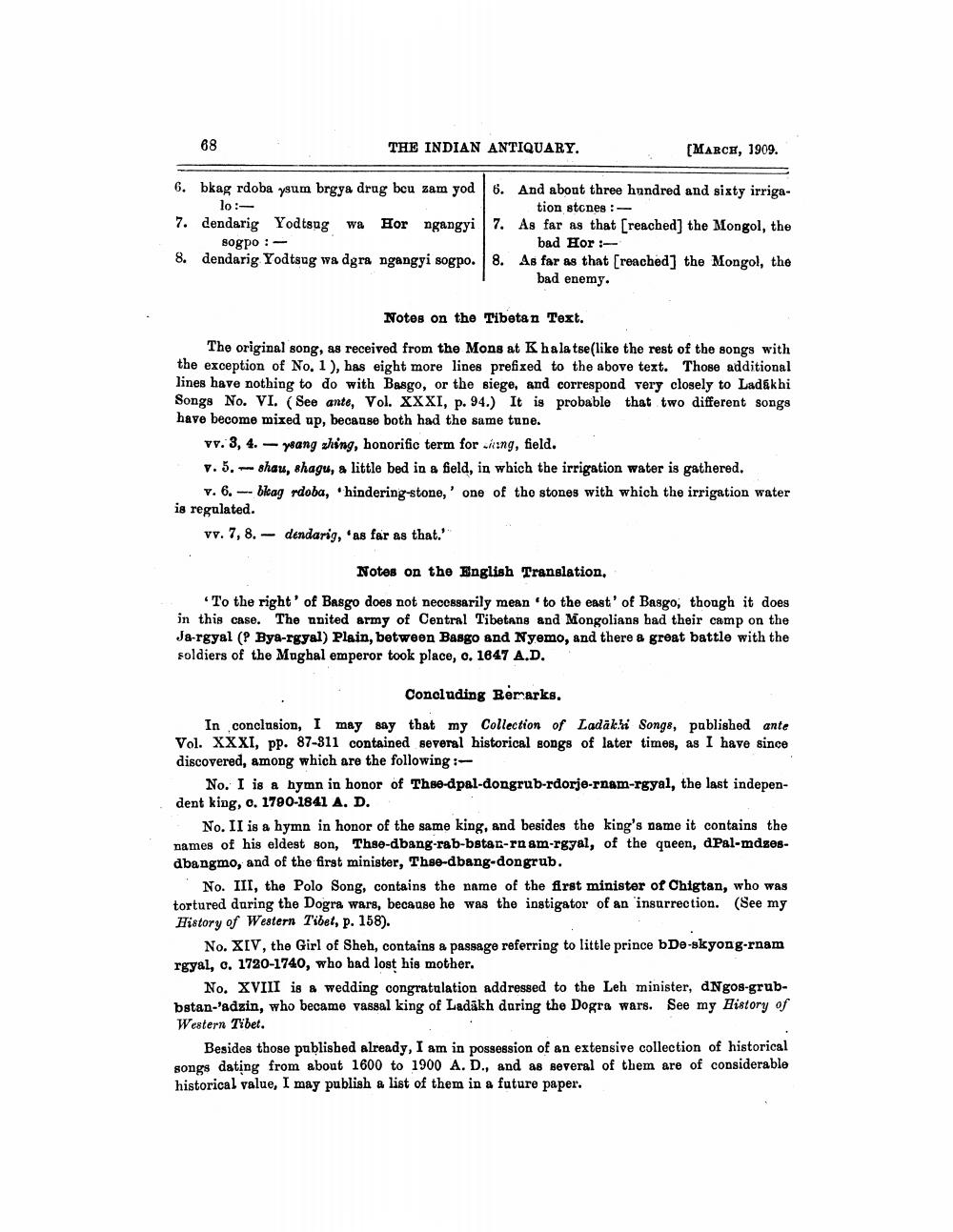________________
68
THE INDIAN ANTIQUARY.
[MARCE, 1909.
6. bkag rdoba ysum brgya drag beu zam yod 6. And about three hundred and sixty irrigalo:
tion stones :7. dendarig Yodtsug wa Hor ngangyi | 7. As far as that (reached] the Mongol, the sogpo :
bad Hor:8. dendarig Yodtsug wa dgra ngangyi sogpo. 8. As far as that (reached] the Mongol, the
bad enemy.
Notes on the Tibetan Text. The original song, as received from the Mons at Khala tse(like the rest of the songs with the exception of No. 1), has eight more lines prefixed to the above text. Those additional lines have nothing to do with Basgo, or the siege, and correspond very closely to Ladakhi Songs No. VI. (See ante, Vol. XXXI, p. 94.) It is probable that two different songs have become mixed up, because both had the same tune.
vv. 3, 4. - yang shing, honorific term for king, field. v.5. - shau, shagu, a little bed in a field, in which the irrigation water is gathered.
v. 6. -- blag rdoba, hindering stone,' one of the stones with which the irrigation water is regulated.
vv. 7, 8. - dendarig, as far as that.'
Notes on the English Translation, To the right of Basgo does not necessarily mean to the east' of Basgo, though it does in this case. The united army of Central Tibetans and Mongolians bad their camp on the Ja-rgyal (P Bya-rgyal) Plain, between Basgo and Nyemo, and there a great battle with the soldiers of the Mughal emperor took place, o. 1647 A.D.
Concluding Remarks, In conclusion, I may say that my Collection of Ladakhi Songs, published ante Vol. XXXI, pp. 87-811 contained several historical songs of later times, as I have since discovered, among which are the following:
No. I is a hymn in honor of Thse-dpal-dongrub-rdorje-rnam-rgyal, the last independent king, o. 1790-1841 A. D.
No. II is a hymn in honor of the same king, and besides the king's name it contains the names of his eldest son, Thse-dbang-rab-bstar-rn am-rgyal, of the queen, dPal-mdgesdbangmo, and of the first minister, Thee-dbang-dongrub.
No. III, the Polo Song, contains the name of the first minister of Chigtan, who was tortured during the Dogra wars, because he was the instigator of an insurrection. (See my History of Western Tibet, p. 158).
No. XIV, the Girl of Sheh, contains & passage referring to little prince bDe-skyong-rnam rgyal, c. 1720-1740, who had lost his mother.
No. XVIII is a wedding congratulation addressed to the Leh minister, dNgos-grubbstan-'adzin, who became vassal king of Ladākh daring the Dogra wars. See my History of Western Tibet.
Besides those published already, I am in possession of an extensive collection of historical songs dating from about 1600 to 1900 A.D., and as several of them are of considerable historical value, I may publish a list of them in a future paper.




